© 2014 Gary Smith Fishing Ltd All Rights Reserved





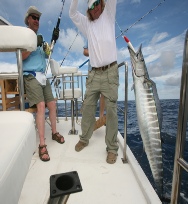
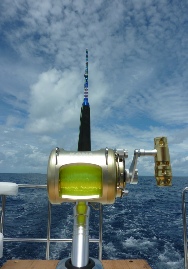

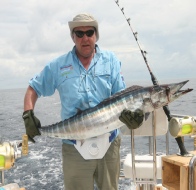

Proudly Associated With

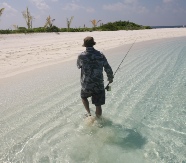
Making your own terminal tackle is something you may want to experiment with. You can buy all sorts of rigs ready made but I find that in constructing my own rigs I have more control over how I fish and this in turn adds to the pleasure of the whole fishing experience.
Most rigs are variations on the simple themes of the paternoster or the running leger. How these terminal rigs are made up depends greatly on the type of terrain you are going to fish and which fish species you are targeting. This week I will explain how to make up a two-hook paternoster for fishing on a sandy-bottomed seabed for Herrera (Striped Sea Bream) and Oblada (Saddled Sea Bream) both very popular fish found in this area.
Paternoster means ‘Our Father’ in Latin, these rigs have been widely used in the Mediterranean regions for centuries and is still the most commonly used today. The likely explanation for the name is that these rigs have junction points along their length to which traces with hooks are tied, similar to a string of rosary beads which also has markers at various intervals, each one necessitating the saying of ‘Our Father’ In Spain rigs are also referred to as the ‘Chambel’ so if you are buying ready made up rigs this is what to ask for.
Materials required for this rig.
0.50 Millimetre 15 Kg Main Line
Packet Of Cut Silicone Tubing
4 Beads
2 Cross Drilled Balls
1 Covered Top Clip
1 Covered Weight Clip
1 Tube Of Super Glue
2 Snoods With No. 12 Hooks
1 Weight 60 Grams to 120 Grams
Firstly cut a 120 centimetres length of 0.50 mm 15 Kg or 30 Lbs line. Measure 30 centimetres down the line and slide 1 piece of silicone tube around 8 millimetres in length down the main line. Next slide 1 bead down followed by 1 cross drilled ball a further bead and another piece of silicone tube. It is essential that the ball can revolve on the line. Take the super glue and at the ends of the silicone tubing farthest away from the beads and ball dab a small amount onto the end of the tube. Let this set and make sure again that the ball revolves. Repeat this procedure 30 centimetres from the other end of the line and leave a few minutes to for the glue to set. Now decide which will be the top and bottom and tie the top clip with the eye in it to the line using a tucked half blood knot, this will connect to a swivel with clip on the end of your reel line making it easy to swap rigs quickly. Now tie the weight clip to the bottom end of the line not forgetting to slide the sheath up the line first. Your chosen weight can now be connected to the rig with ease and your rig can be held on a holder without the weight having to be attached all the time.
The next step is attaching the snood lengths (Short lengths of line that carry the hooks) I buy hooks with line already attached for several reasons, the main one being it is easier to load bait with a baiting needle when there is a smooth manufactured connection between hook and line. For reloading bait quickly, especially in the dark this is essential. The lengths of line attached to the hook are usually a metre long, cut the hook line designated for your top hook to 30 centimetres, adjust this to 20 centimetres for a rougher sea, push the line through the hole in the ball on your rig and tie a stop knot at the end or use a stop block then a stop knot. Make sure that the line is not likely to pull through the hole with a fish pulling at it.
For the bottom hook length repeat this procedure, you can make the hook length a little longer for calm seas so it sits on the bottom away from the weight, Herrera scour the seabed for food and this hook needs to be on the seabed a little away from the weight. Now you have finished check once again that the balls with the hook lines connected revolve on the main line, if they do not the hook lines will tangle with the main line and fish will not come near your bait.
Once you are fishing with this set up you can alter your hook lengths to suit the sea conditions, for rougher seas shorter hook lengths, for calm seas longer and remember simple is best. You can make several of these up for a fishing session and replace hook lengths later as the line becomes twisted after several casts, simply replacing it with a another ready made up rig.
Copyright © Gary Smith & Luigi Mateos
Back
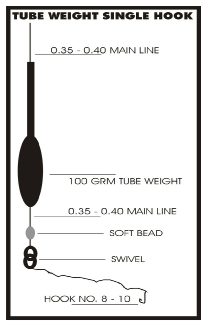
| Address |
| Contact Us |
